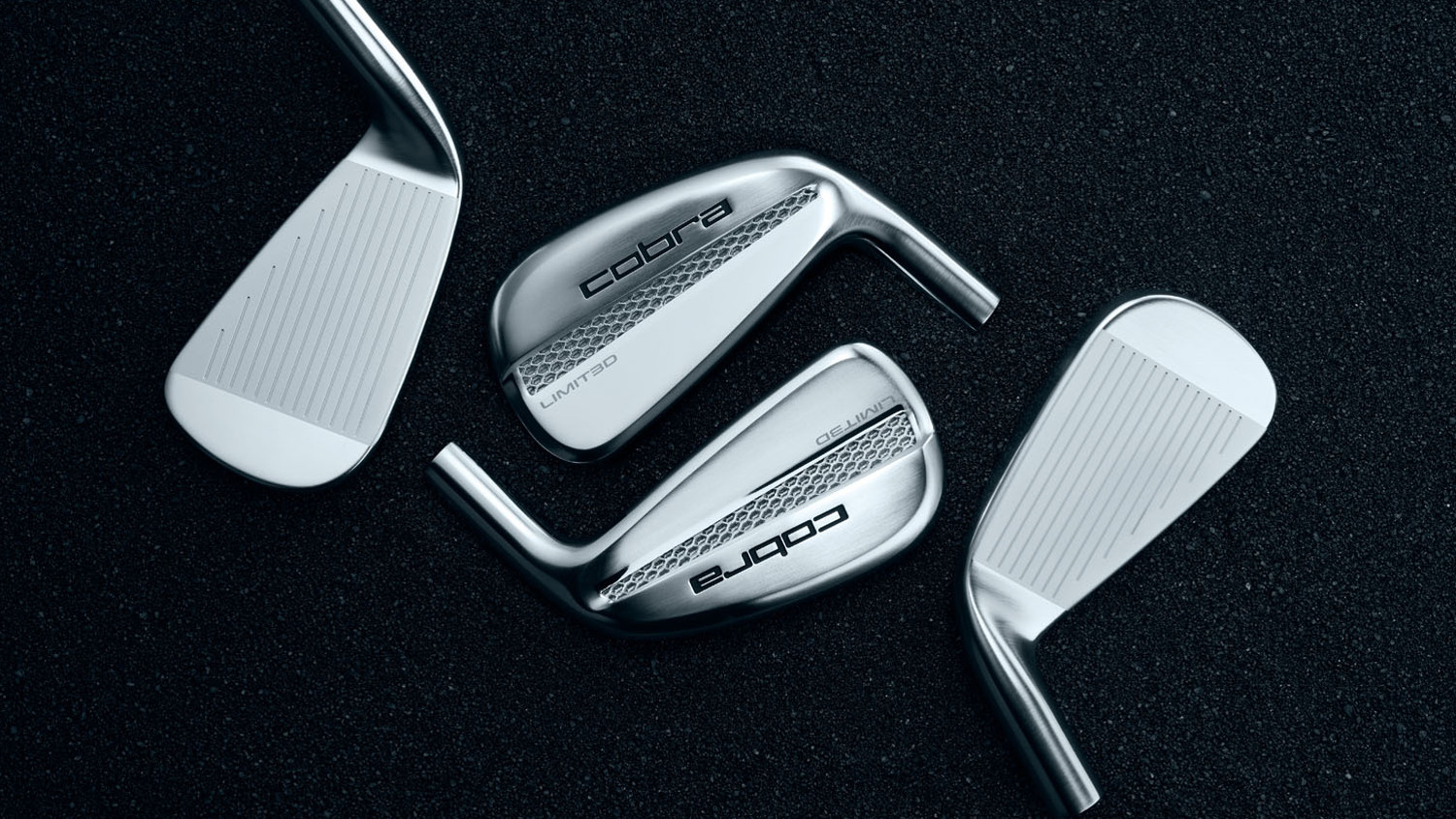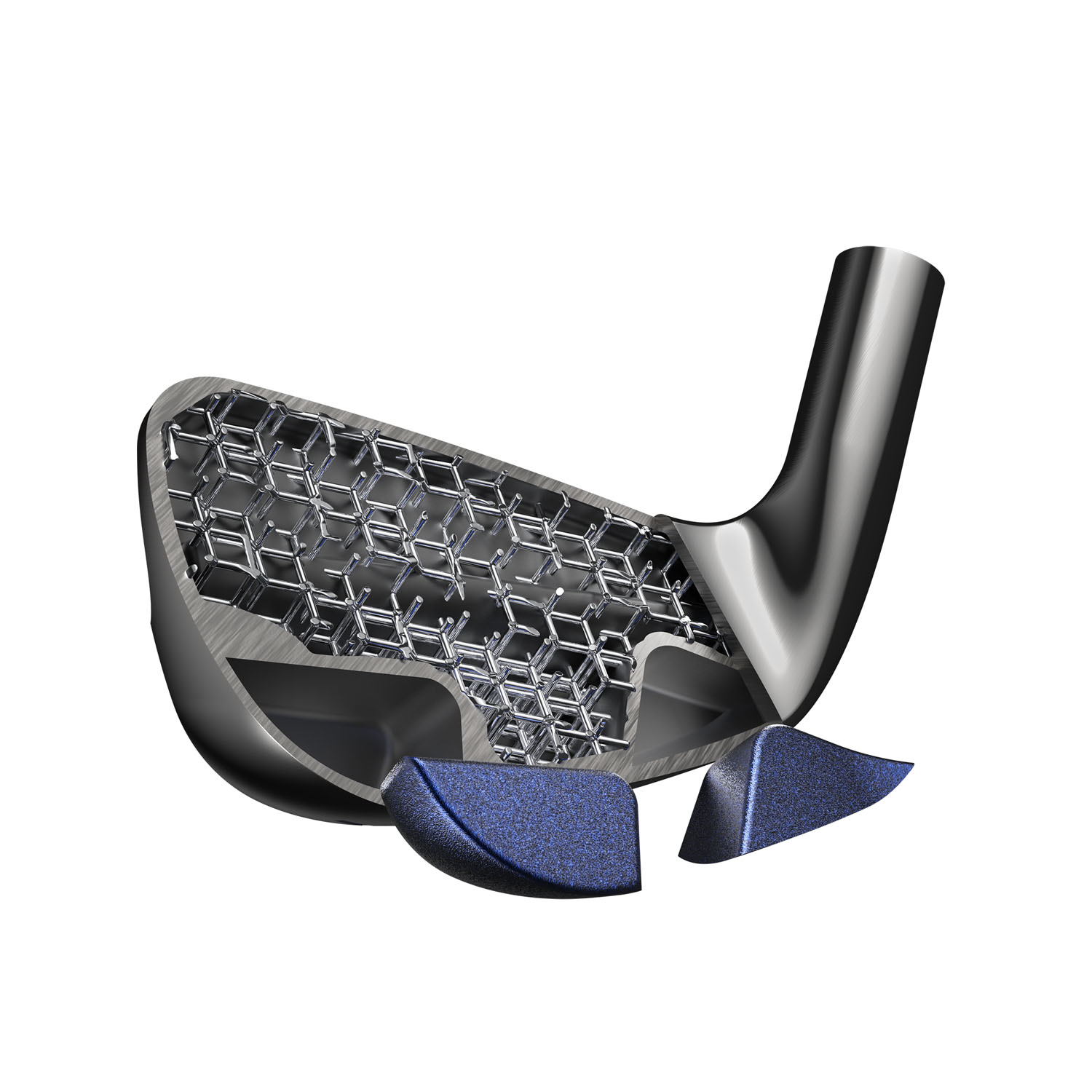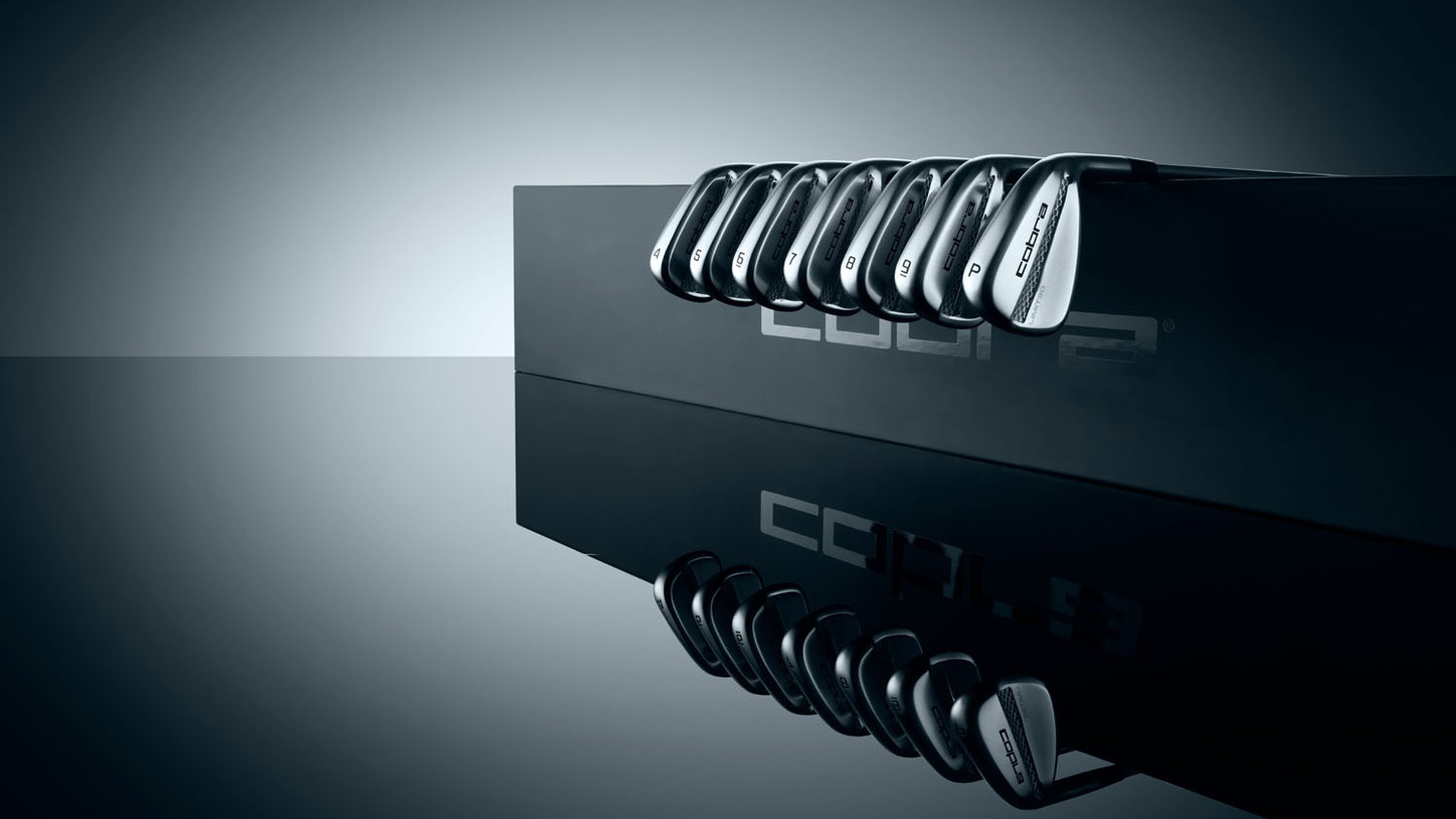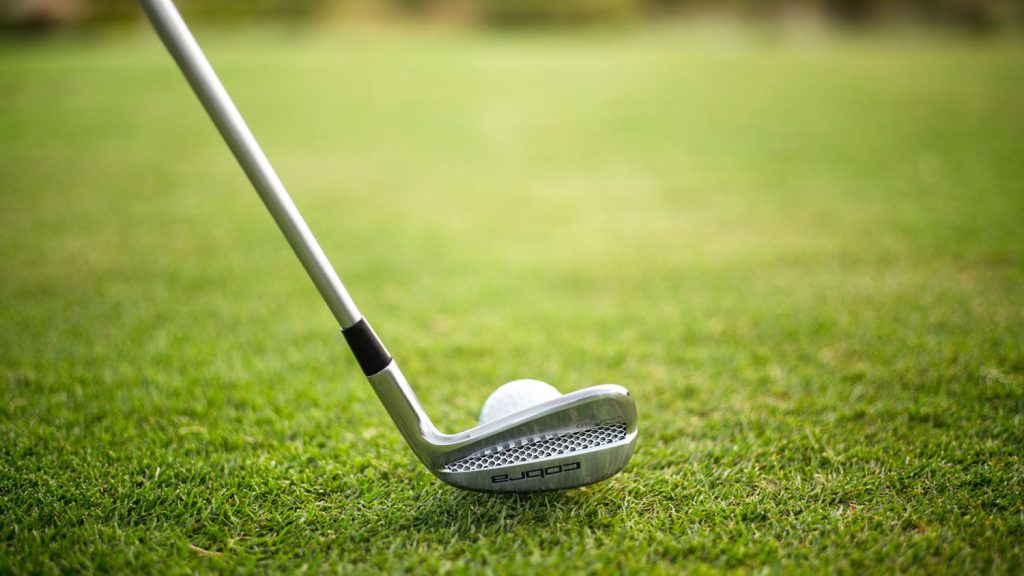The first golfing irons to be built using 3D printing are no gimmick. These clubs offer a unique design and a level of performance that are making both amateurs and pros fall in love. Stephen Holmes speaks to the team at Cobra Golf about the work that went into its Limit3D range
While drivers are expected to deliver big hits off the tee, and putters must finish the job on the green, it’s irons that enable players to navigate some of the most challenging areas of the golf course.
Each iron has a unique angled loft design, designed to enable a golfer to hit the ball a specific distance with greater accuracy. This comes with a caveat: the ball needs to be struck in the centre of the club face, otherwise the club’s promised performance may end up in the bunker.
Some players choose more forgiving clubs that add bulk to make this sweet spot bigger. More skilful pros typically look to the power and rigidity of defter clubs.
And plenty of enthusiasts want to emulate their heros, regardless of their own skill level, according to Ryan Roach, director of innovation at Cobra Golf. “They want to play something that looks like what the pros play – but they just aren’t good enough to hit the ball with it.”
The Carlsbad, California-based company has a robust presence in the global golf market through innovative club design, with many products using metals 3D printing. But the team were still looking for the best application of additive manufacturing for the sport.
Roach and Cobra’s vice president of innovation Mike Yagley had already helped develop putters that take advantage of 3D-printed club heads, but irons looked likely to attract more market demand.
“There are an awful lot of golfers out there – some really accomplished golfers and some golfers that are, let’s say, average – for who we could make an iron that in some way, either in feel, distance, consistency or forgiveness, was going to be substantially better than anything they’d ever played. That got me super-excited,” says Yagley.
The ability to marry the forgiveness of a development club to the look and feel of a pro model led the team at Cobra Golf to develop its Limit3D irons.

Limit3D // Built different
Cobra has been using 3D printing for many years now, initially with polymer models being used for shape validation and iteration, and metals printing added in around 2015 to build prototypes faster as club designs became more complex.
“Where, in the past, we would just go out to our machine shop and machine up a prototype, the designs were becoming more complex, and so it became a steeper task to actually make that and stay true to the design,” explains Roach.
The harder it became to remove materials, the more clubs had to be produced in multiple pieces and assembled, adding time and expense to prototyping. Cobra shifted to 3D printing which, while still costly, proved cheaper than making tooling for five test designs.
“You’re using one alloy to print the entire head, whereas you might have been using all sorts of different parts to try and do this. Before, it’d be expensive. You’d have to join it, then you’d have to worry about the joints, and would it stay together?” says Yagley.
The team soon began to view additive manufacturing as a chance to manipulate the material inside the clubs, in order to lightweight designs and develop new properties.
Roach explains that, when it began to deal with the structures additive manufacturing allows, the team quickly found a rather unappealing workflow.
“We tested out a lot of software,” he reflects. From lattice add-ons in its CAD software Siemens NX, to recommendations like Materialise and Autodesk, Roach found the process to develop an internal club lattice “too cumbersome”.
The team then began to investigate specialist latticing software, and were immediately taken with the implicit modelling of nTop. “The barrier to entry with nTop was a little bit higher than, say, NX, because we knew NX and we knew the workflow and how to use it. But the functionality of the NX lattice software was not up to par, compared to what nTop offered us,” says Roach.
“Once we got going, it was really eye-opening how intuitive it is once you get over that initial barrier to entry. And if you’re of an engineering mindset – not that we’re all computer programmers over here – and you’ve had some exposure to coding, I think that the workf ow works more like a coding slant than, say, a traditional CAD creation slant. It allowed us to iterate very fast.”
The bulk of the design and surfaces of the Limit3D irons are still produced with NX, but the interior lattice has been developed using nTop, which has led to a lot of twists and turns in development.
By using a lattice, 100 grams of steel – some 33% of overall club weight – could be removed from the main club head design. This gave designers the ability to add that weight back in strategically. To do this, high-density tungsten inserts are added in the lowest heel and toe points of the club, dropping the centre of gravity and spreading the weight to allow for a higher moment of inertia, but without changing the shape of the head.
“So you’ve still got this nice, players-looking head, but you’ve got the mass properties – meaning centre gravity and moment of inertia – that you’re used to experiencing, but with something that’s a way different shape,” says Roach.
“The old adage of ‘form follows function’? Well, with additive, it doesn’t necessarily have to. We’ve been able to separate them.”
Yagley reflects on watching players, of all abilities, using the clubs for the first time. “It’s really interesting when, given the shape, they hit it and they have what we call this paradoxical reaction, like, ‘Wait a minute, this thing in the shape it’s in shouldn’t do what it just did’. Both the less accomplished players and the really accomplished players have the same reaction, for different reasons,” he says.
“It’s like, ‘Wow, I can play this if I’m not that good. Or, holy crap, I’m really good and this thing is doing things I want it to do and more. We’re able to shift that curve because of 3D printing, the removal of mass, but still making it stiff , because you’ve got the lattice putting the mass down low and wide.”
The beauty of what Cobra Golf is doing comes down to this, he concludes: “Engineers can look at it and go, ‘That’s a hell of a solution for what was a fairly complex problem!”

Limit3D // Big swing
The development entailed a lot of physical testing to ensure durability. The team’s typical simulation set-up for club impact simulations, comprising Ansys LS-Dyna and Altair Hyperworks, needed validating for the new lattice internal structures.
Long before club heads are shafted up and swung, the method of choice is shooting balls at the face of the club at varying speeds using an air cannon. The number of hits and their speed are varied, allowing the test team to check for cracks or issues like face deflection.
FEA analysis for clubs like drivers is now pretty mature in terms of understanding the modal analysis, stresses and the performance of a ball off a club face, says Yagley.
With drivers subjected to forces in the region of 3,000G and irons around 1,000G, it’s a huge load – the reason why all club designs are still subjected to physical air cannon tests.
“Things can happen that you just don’t pick up in normal FEA analysis,” explains Yagley. “There’s nothing wrong with that. We’re using the tools for what we can, but we still have to make and break our clubs.”
Cobra has already simulated its designs statically in nTop, for stress and for modal analysis, the latter proving particularly interesting to the designers, because it enables them to achieve a vibration signature similar to that of other solid, professional irons.
Vibration, and in particular, the noises made when the club strikes the ball, began to be a factor as driver heads grew in size and materials shifted from wood to steel and then to titanium, impacting the feel of the club and making what Roach describes as “some pretty weird sounds!”
He comments: “Even with irons, when you start making cavity back irons, you get that face really thin, it changes the acoustics and the feel of the club.”
The standard fix is to stick something on the back of the face to act as damping and help dissipate the vibration. Or, if it’s hollow, it might be filled with a foam or TPU to help mitigate the sound. “You’re just putting band-aids on a problem there,” says Roach. “In some cases, there’s some advantage to having that thin face, because you get maybe a little more face flex, which translates into ball speed. But the clubs that are designed for the better player, they’re pretty stiff overall, and you don’t hear the club as much as you hear just the ball compression sound.
So that’s what we were going for with the Limit3D. We put the lattice in there to save a bunch of weight and maintain that stiffness to make it as close to what that solid structure would be.”

Limit3D // A quick round
Cobra’s development cycle for its Limit3D irons, with ability to design, print and test iterations on demand, meant progress was swift.
Working with an additive production supplier, as it does with casting and forging houses, Roach explains that while earlier 3D printed putters were built using HP Metal Jet Fusion, the Limit3D clubs are produced in 316L stainless steel using SLS 3D printing.
This process allows for 16 club heads to be produced on a single build plate, and the unsintered powder supporting the internal lattice to be removed through two small openings.
“If those truly were 16 different versions that required different tools for forging or for casting, we’d probably look at it and go, ‘Okay, we’re never going to do this’. It could take years to make all those tools, to make the waxes, to make the investment casting, or to make the tools, to make the forged part, and that’s too expensive,” he says.
“So you can literally do 16 different variants on one build. Imagine the design experiments, or just the variations you could achieve, which you just wouldn’t do with forging or casting!”
Using nTop allowed the team the ability to adjust designs very quickly, almost on the fly, and to fix problems when found, says Roach. “That’s coupled with the fact that there’s no tooling, so when we did make a design change, it was ‘Okay, now go print it, and then we’ll deal with it’. So that got the project over the finish line in such a fast manner relative to our traditional process cycle.”
Cobra calculates that the Limit3D clubs were developed in a little over 18 months – from the start of innovation to having a product in the market. That’s cutting the typical three year process by around half.
“This alone is exciting, and as we are trying to proliferate the use of this approach when we have a good case that works, it’s the speed with which we can do stuff I think will be a big advantage for our company.”
The process allows the club’s steel surfaces to be machined and polished, while a small segment of sintered lattice on the back of the club is exposed.
Initial prototypes didn’t feature any lattice at all. “They just look like a standard club, and some of the tour pros that we tested with preferred that,” Roach confides. “But I think we struck a really good balance with making sure that we were able to show it, so that people understood that there’s something different about this club,” he says.
“We have an amazing industrial design team, and so we want to make sure we evoke the look of technology, but it’s there for the aesthetics. It does save a little weight, but it’s inside where the performance is really happening.”
The visible section is structurally different to the lattice inside the iron, which the team describe as a functional lattice unit cell, with a specific unit cell size and type to achieve the necessary stiffness.
Outside, the lattice is a marriage of art and science, says Roach, “which golf clubs are to a lot of people!”

A better way
The next step will be for Cobra to integrate more additive manufacturing into its process, in order to support both new ways of incorporating new materials such as titanium and more means of testing dynamic simulation analysis.
Additive, alongside casting and forging, looks set to form a key pillar of Cobra’s future manufacturing, with much of this about finding cost-effective ways to bring new designs to market – especially when it comes to levels of post-processing.
“It’s got to look like a piece of jewellery for most golfers,” says Roach, walking us through the transition of a metal club head through the factory.
Regardless of how it was made, each head is subjected to the necessary grinding, polishing, PVD coating, chroming, painting and application of decals.
“If you went to a golf club factory right now, you might be surprised at just how many people are in there and how many times a golf club head is touched by a human,” says Roach.
“I’ve heard that a driver, from cast titanium body to a finished head, can be touched 300 to 400 times, depending upon the product and the factory.”
Yagley adds: “If you look at an iron, it’s a very complex surface. Our being able to print it and turn it into something that’s acceptable from a looks standpoint, and doing it cost effectively, is one of our great quests.”
For now, the combination of exciting, high-performance lattice structures and unique 3D printed parts is producing a brand new approach to club design for the centuries-old sport.
The Limit3D summer release was limited to 500 sets of the clubs. At $3,000 a set, the price still had amateur players clamouring to buy them, eager to play with irons that look like the hard-to-play pro clubs.
With the real professionals now well into the test season, Cobra is seeing its tour players look at the clubs from a different perspective. “August to November is when they get to test all this stuff,” explains Yagley, whose phone lights up throughout our interview as yet more feedback from the brand’s stars arrives.
“Now they’re testing and they’re saying, ‘Wow, this thing’s the best I’ve ever hit in my life. Why wouldn’t I play it?’ So, you’re going to see more players switch over.”
This article first appeared in DEVELOP3D Magazine
DEVELOP3D is a publication dedicated to product design + development, from concept to manufacture and the technologies behind it all.
To receive the physical publication or digital issue free, as well as exclusive news and offers, subscribe to DEVELOP3D Magazine here






